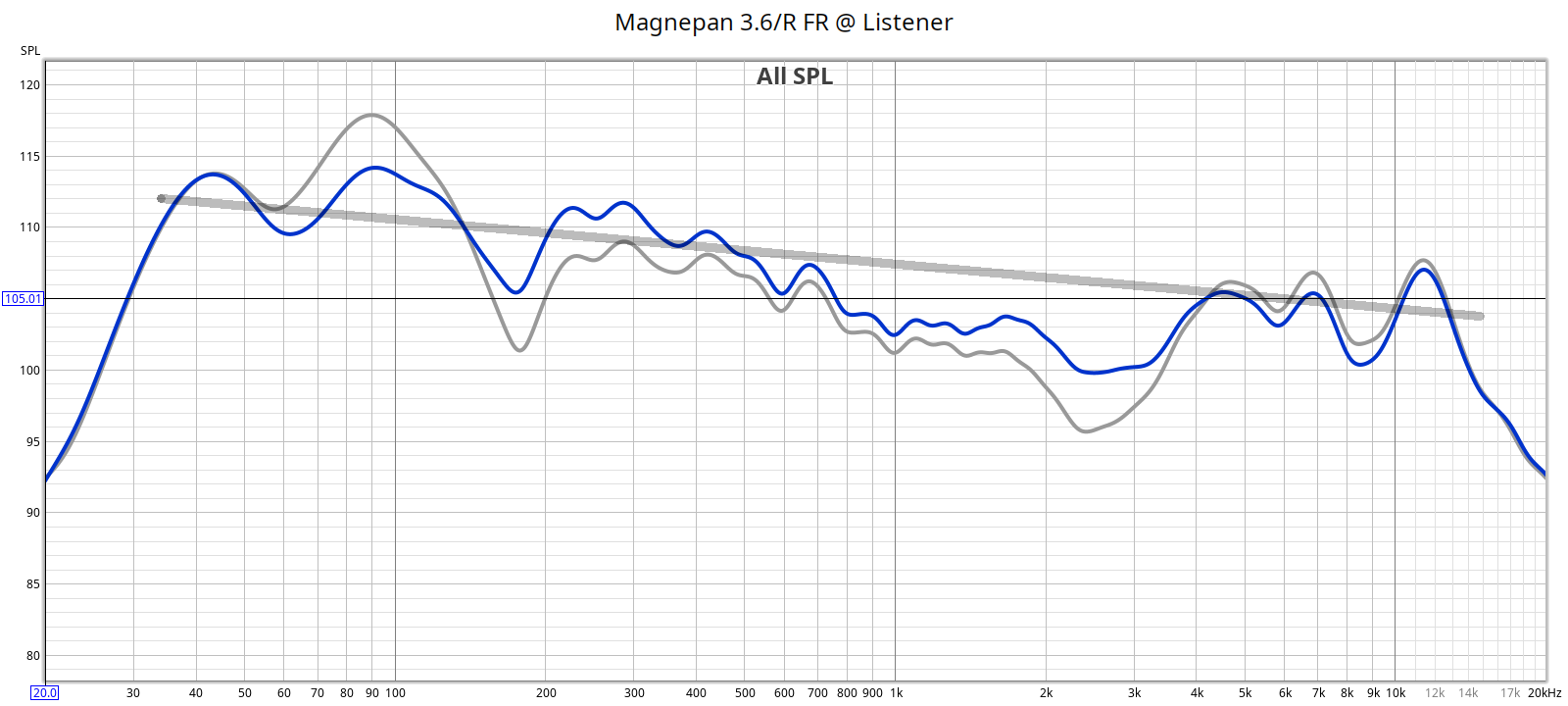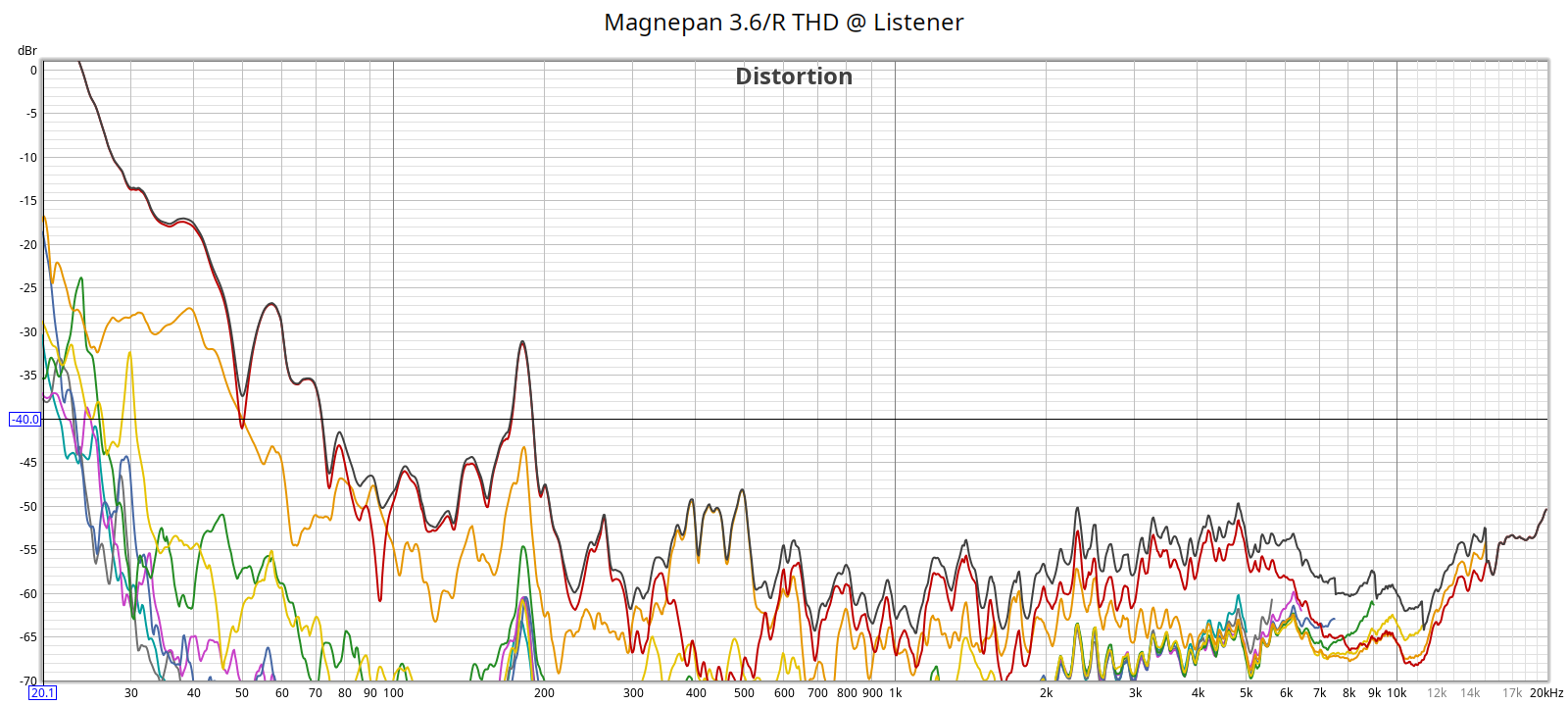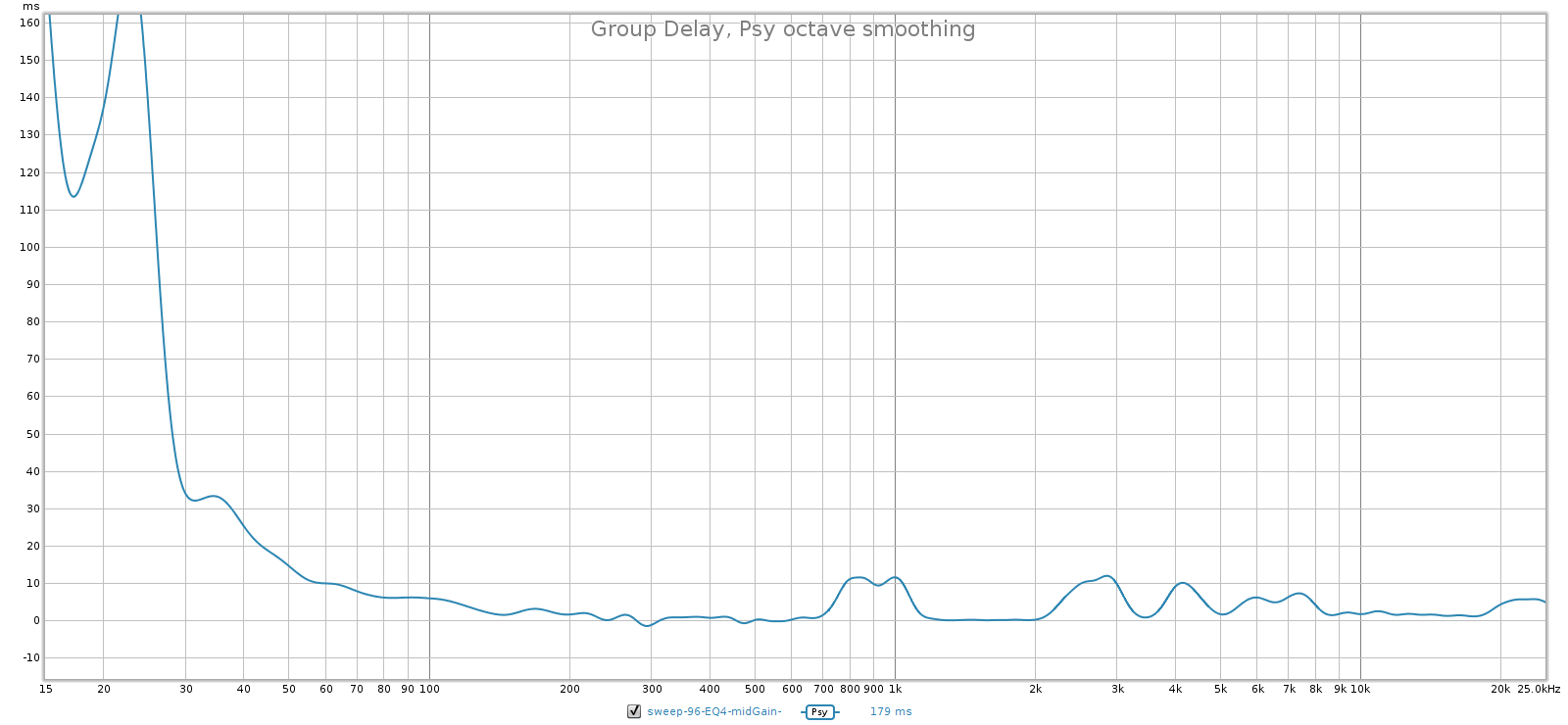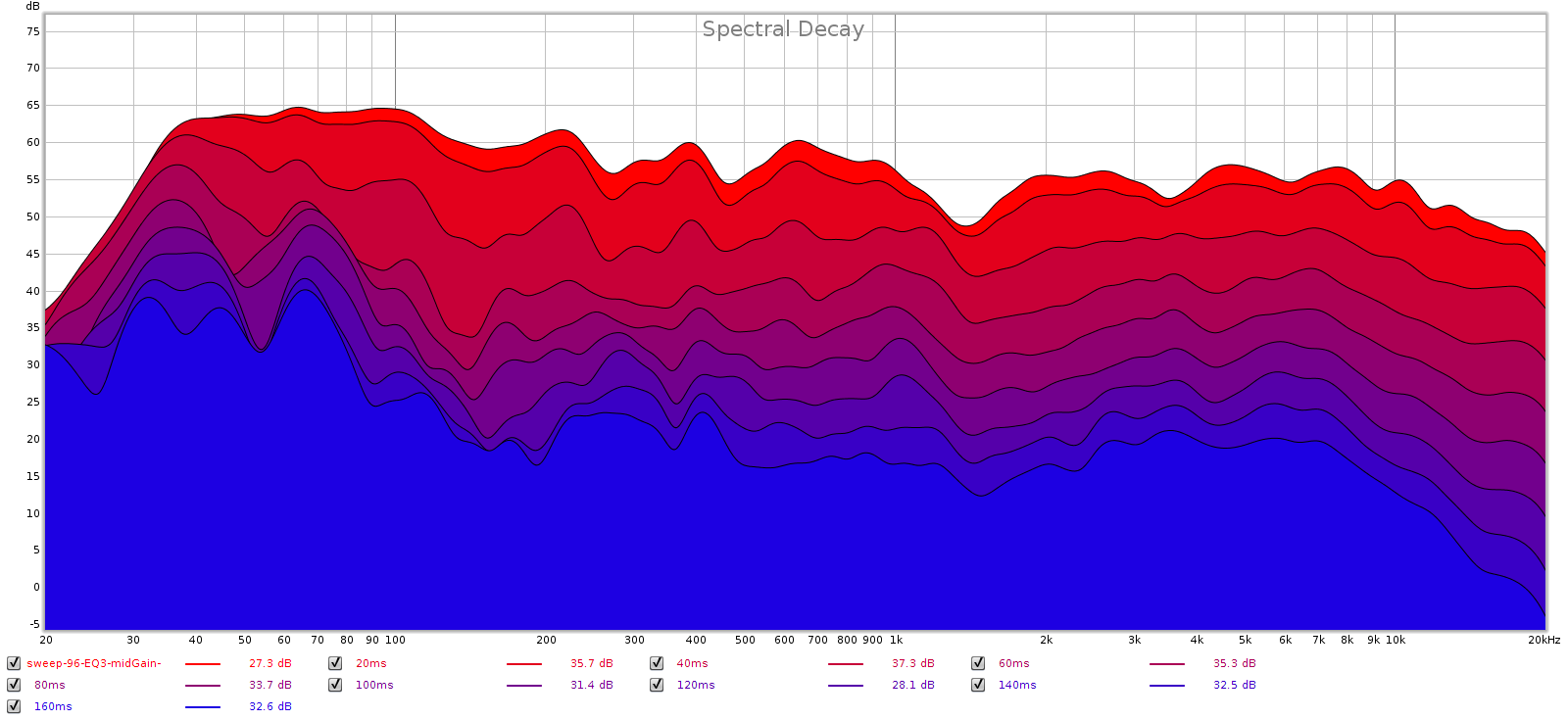Today I learned how to use Room EQ Wizard to tune my audio room. I had already done room tuning on my own and was happy with the results. But REW enabled me to get it even better.
Here’s the final FR measured from the listener position, psychoacoustically smoothed (update: from Nov 2024). The Grey line is without EQ, the blue is with EQ. You can see that the EQ is only a few bands.

It’s linear and smooth, with a typical tapering response. This is a treated room having big tube traps, bass traps and acoustic foam. The parametric EQ is mild with gentle amplitudes and slopes. I’d rather have a few little bumps in the response, than perfectly flat response with bloated phasey sound from extreme EQ settings. Don’t let the cure be worse than the disease!
Overall, this smoothed response throughout the range. During test listening I can switch curves instantly while the music is playing. My ears like the difference, especially noticeable on good acoustic music recordings.
Equipment & Details
- Test audio files created by REW version 5.2 beta 4, burned to DVD-A
- Oppo BDP-83 toslink PCM output
- Behringer DEQ2496 digital EQ, toslink input and output
- Corda Soul DAC-preamp, toslink input, XLR output
- Adcom 5800 amp (28 years old), XLR input
- Magnepan 3.6/R speakers (20 years old)
- Room treatments (floor-ceiling tube traps, RPG acoustic foam, etc.)
- MiniDSP UMK-1 measurement mic, and Rode NT1A mics, both calibrated
- Recorded from the listener position
Here are the rest of the REW plots:
I measured distortion at the listener position and it includes all distortion from the power amp, microphone & recorder.

Total distortion is well below -40 dB (1%) above 70 Hz, and below -50 dB (0.3%) above 200 Hz. That is excellent for any speaker, even lower than most headphones. Distortion rises into low frequencies, which is common for speakers and not an issue since distortion is much harder to hear in low frequencies. The blip at 180 Hz is caused by a strong narrow room null.
Group Delay is pretty flat. Rises in the bass as usual. But it’s 10 ms or less from 60 Hz on up, a near perfectly flat zero for most of the range. This seems typical of planar speakers.
Initial impulse response is near zero in about 3 milliseconds, and you can see the reflections at 5 and 10 ms.
Total impulse energy is about -40 dB in the first 100 ms, from the listener position which includes room reverb. Room treatment damps the room, but it’s not completely dead. The grey is minimum phase IR, which is very close to the actual response.
The CSD looks linear (no obvious ringing frequencies above the bass region) and decently fast. The room treatment certainly helps here:
Here’s the Spectrogram. There’s some mild ring around 64 Hz and rising decay time below 50 Hz. Overall pretty flat and even. That’s room treatments doing their job.
Since I treated this room I’ve been happy with the sound. With these measurements I was able to apply EQ to fine tune some things I couldn’t fix with room treatments.




